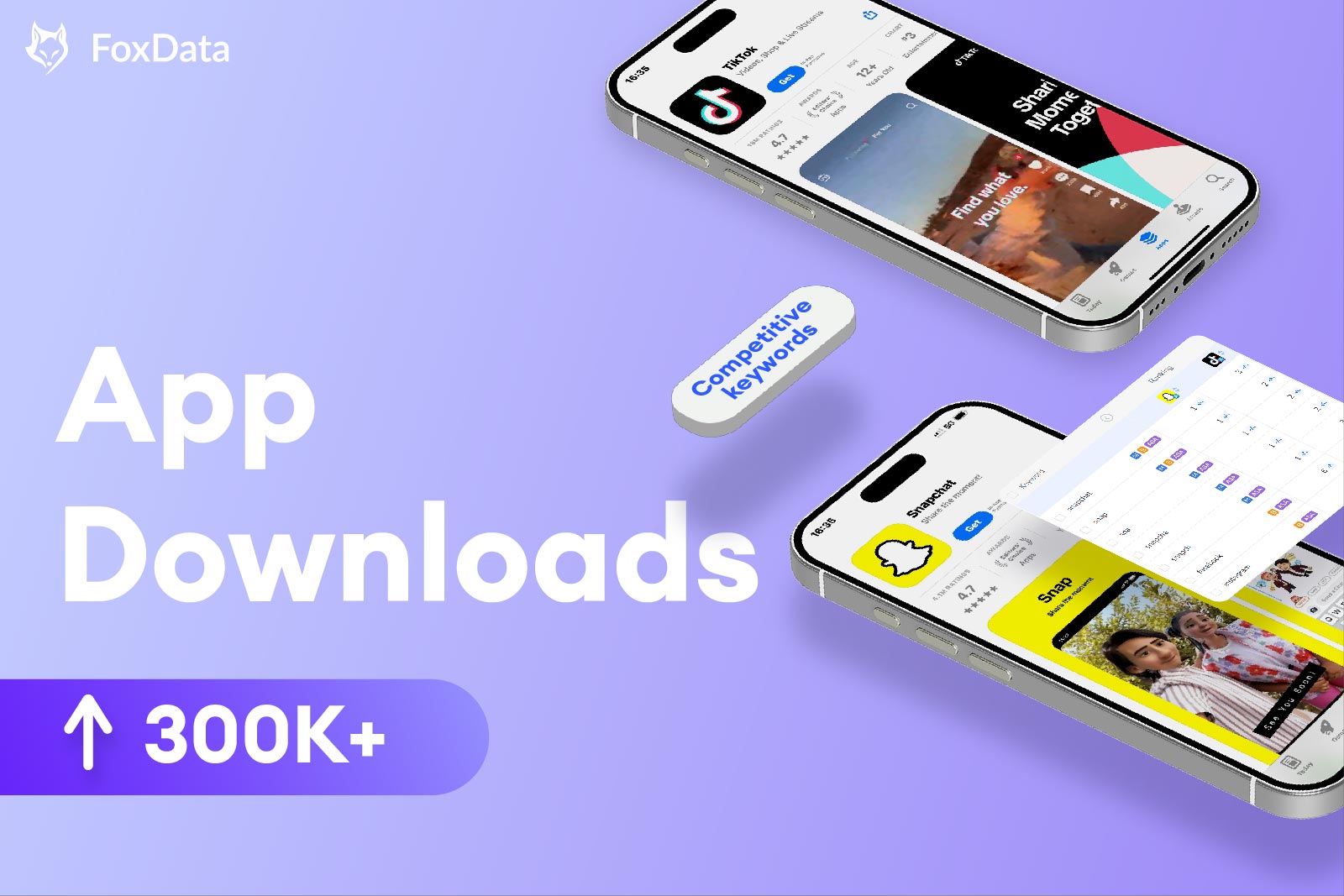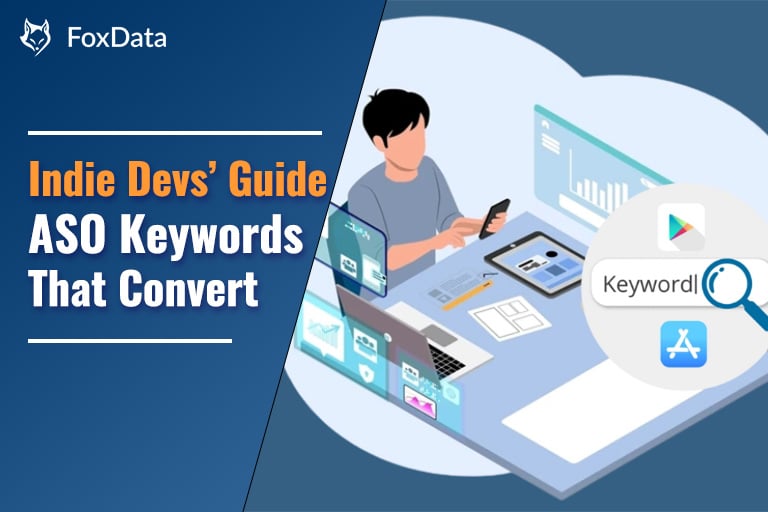How to Maximize Your App's User Acquisition Strategy for Peak Performance
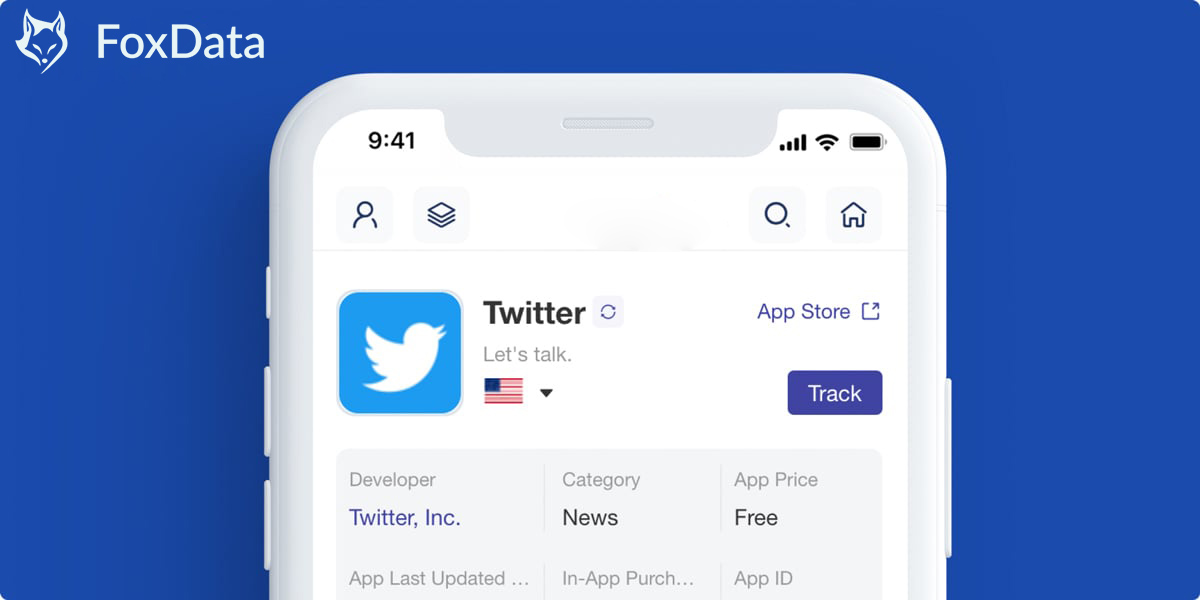
In our previous blog post, we discussed effective strategies to combine UA & ASO for Mobile App Marketing 👉How to Combine UA & ASO for Mobile App Marketing. Today, we will delve deeper into the topic and explore the best practices for conducting UA campaigns on different platforms, monitoring key metrics, and avoiding common pitfalls.
Developing a Targeted UA Strategy for Different Platforms
Facebook, Snapchat, TikTok
To maximize the potential of these traffic sources, it is recommended to scale horizontally by gradually increasing the budget and bid.
Start by increasing the campaign's budget or the ad set's bid. You can adjust the budget multiple times a day or every few days, depending on the campaign's response to budget increases and the daily conversion rate (CR). Monitor how your key metrics change with each adjustment.
If the advertising account is unable to meet the desired budget, you can continue scaling by gradually raising the bid. However, be cautious as this may lead to a rapid increase in cost. Keep a close eye on your crucial metrics to ensure the performance remains favorable.
When expanding your UA efforts to multiple bid and budget pacing strategies, consider simultaneously running campaigns with different bid and budget settings. This technique can be applied not only to Facebook but also to TikTok.
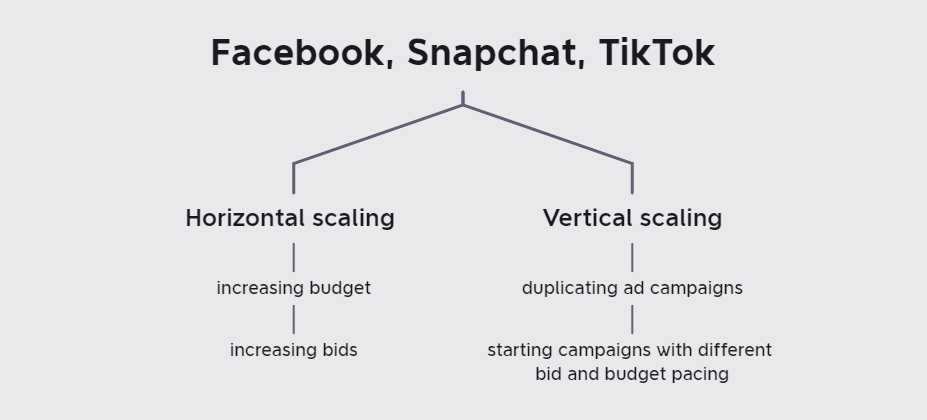
Ad Networks
Don't overlook the potential of ad networks to reach a wider audience. However, scaling on these platforms requires a different approach.
Unlike social media platforms, ad networks primarily support horizontal scaling. This means increasing budgets, bids, or including more geographic regions. It's important to note that replica campaigns on ad networks will target the same audience as the original campaign, resulting in campaigns competing against each other.
In terms of scalability, there are two main categories on ad networks:
- Scaling Return on Ad Spend (ROAS) campaigns with internal product metric optimization
- Scaling install campaigns with app install optimization
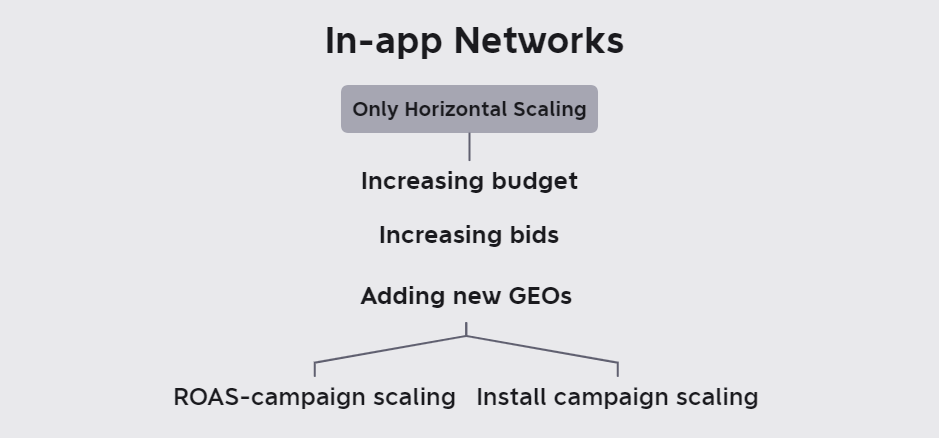
Based on our experimentation, scaling ROAS campaigns on in-app networks is easier and more reliable. The algorithms used by ad networks respond predictably over time, allowing them to learn effectively even with limited traffic volumes.
When scaling install campaigns on ad networks, it's recommended to separate traffic by specific locations and even individual apps. Understand the audience that will be exposed to your ads and tailor your creative assets accordingly. Working with each major publication separately makes it easier to adjust bids and assign unique creatives.
Additionally, consider each geographic segment as a distinct entity when scaling on ad networks. Analyze aggregate metrics such as Lifetime Value (LTV) and retention rate if there is insufficient data to analyze individual traffic sources. Keep in mind that different metrics may impact large publishers versus small sources of traffic, depending on your product and goals.
Monitoring Key UA Metrics
When scaling UA campaigns, it's crucial to closely monitor key metrics such as CPM, CTR, Install Rate (IR), Conversion Rate (CR), and Return on Ad Spend (ROAS). These metrics become increasingly important as traffic volumes increase.
Determine which metrics are crucial for your campaign based on your key performance indicators (KPIs). For example, for products that monetize through advertising, metrics like Cost per Install (CPI) and impressions per user are relevant. For purchase monetization, focus on metrics such as Cost per Action (CPA) or ROAS.
As you scale your campaigns, keep in mind that metrics may deteriorate. Paid traffic often requires ad platforms to optimize for increased visitors while maintaining the same purchase price, which becomes more challenging as your marketing budget grows. Therefore, it's important to track critical metrics daily and observe any changes. Tools like the Ad Reporting tool in Facebook Ads can help consolidate metrics for easier analysis.
Pitfalls of Scaling UA Campaigns
Scaling UA campaigns can come with its challenges. Here are some potential pitfalls to be aware of:
- Decline in marketing metrics after increasing spending: This is a common issue when scaling campaigns. To mitigate this, it's advisable to gradually increase the budget to reduce the impact.
- Internal cannibalism within a single traffic source: Multiple campaigns may compete for the same audience, resulting in campaigns draining each other's funds. To address this, consider duplicating campaigns for different target audiences.
- Saturation of available traffic sources: As campaigns reach high traffic levels, sources may start competing for attention, making it harder to achieve desired acquisition costs.
- Creative burnout and the need for frequent creative updates: To prevent creative fatigue, maintain a backlog of fresh creative ideas to keep campaigns engaging.
- Potential ad campaign bans: Scaling may attract increased scrutiny from ad platforms, and even compliant projects can get blacklisted. Adhere to the platform guidelines to avoid such issues.
- Limits on ad campaigns for new fan pages: Facebook imposes limits on the number of active ads running on new fan pages. To effectively scale on Facebook, consider running multiple campaigns with different pages or meeting the spending threshold required to expand the limit.
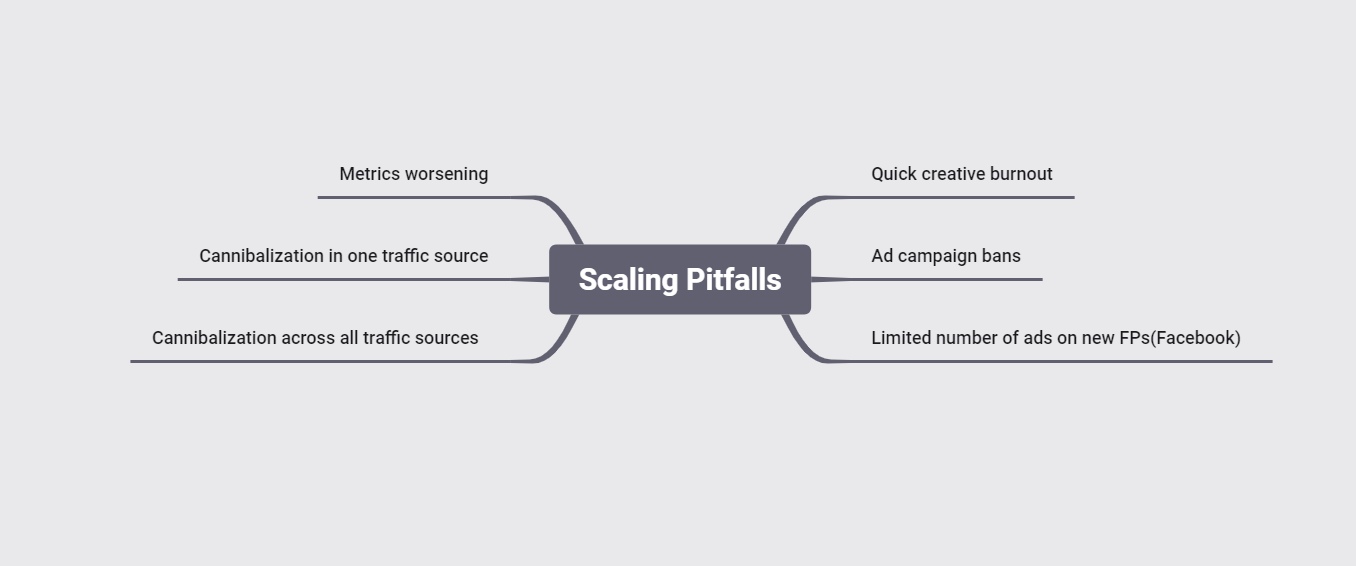
Rules for Effective Ad Campaign Scaling
To ensure successful scaling of UA campaigns, consider following these guidelines:
Monitor product and marketing metrics in real-time
Frequently monitor important indicators to catch any potential issues. Keep an eye on the dynamics of key metrics, such as CPM, CTR, IR, CPI, CPA, ROAS, ARPU, and CR, as they can provide insights into the success of your campaign.
Pay attention to metrics like CPM, CTR, and IR, as they can indicate creative fatigue or a decline in organic traffic due to increased bought traffic volumes.
Metrics like CR, CPA, ROAS, and ARPU can reveal changes in audience segments or the platform's learning capabilities. Analyze these metrics to make informed decisions.
Gradually increase traffic volumes
Scaling campaigns with a large budget right from the start is unlikely to yield immediate success. Take a gradual approach to allow for effective optimization and growth.
Utilize automatic rules where possible
Consider setting up automated rules to prevent budget waste caused by sudden increases in advertising costs. These rules can help identify and disable campaigns that violate predefined metrics.
Continuously test new creatives
Maintain a creative backlog and regularly introduce fresh ideas to your campaigns. This allows you to avoid creative exhaustion and ensure a steady flow of engaging content.
Scaling iOS Campaigns in the Post-IDFA Reality

The post-IDFA (Identifier for Advertisers) reality presents unique challenges for user acquisition teams. Here are some considerations when scaling iOS campaigns:
- Limitations on the number of active campaigns: Each app is subject to specific limits on the number of active campaigns across different social media platforms. This limitation can pose challenges when running multiple tests simultaneously.
- Delayed data transmission and incomplete attribution: With SKAdNetwork, conversion and installation data may be delayed by up to 3 days. This makes it challenging to confidently scale traffic volumes and accurately analyze metric changes. Be mindful that not all traffic may be attributed to the corresponding platform when dealing with smaller quantities.
- Traffic attribution issues with multiple sources: Simultaneously operating more than two traffic sources can create attribution challenges. It's important to consider how different sources impact traffic attribution to ensure accurate measurement.
- Changes in benchmarks: Benchmarks from the pre-IDFA era may no longer be as reliable. It's recommended to maintain a minimum threshold of 88 app installs per day for effective attribution in trackers such as AppsFlyer, Adjust, myTracker, AppMetrica, Branch, etc. Meeting this threshold may increase the cost of acquisition in Tier-1 countries.
- Increase in CPM: The cost per mille (CPM) in the auction has significantly increased, reflecting the growing overall price for mobile traffic. We suggest testing profit chains and creatives on Android first before implementing them on iOS.
Scaling UA campaigns requires careful planning and consideration. It's essential to gather and analyze as much data as possible to make informed decisions. While scaling may seem challenging, having a well-defined strategy and adhering to best practices can make the process more effective.
Now just join FoxData and embark on a journey of business growth as we unveil a FREE App Data Analytics Tool, which boosts your downloads, increases your user base, and watches your performance soar to new heights!


